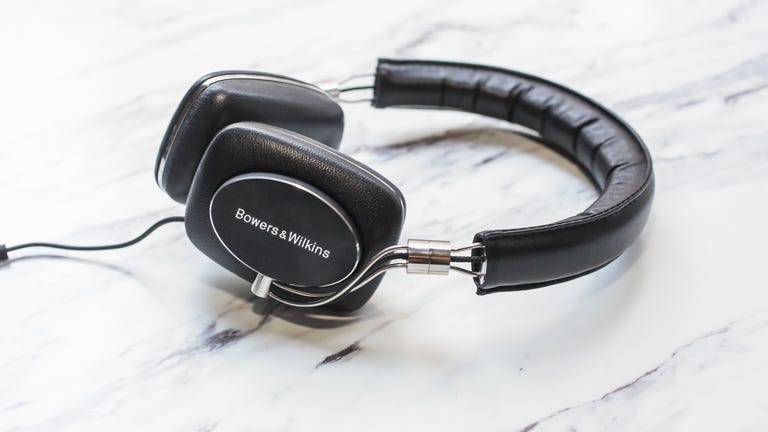 Why You Can Trust CNET
Why You Can Trust CNET Bowers and Wilkins P5 Series 2 review: A premium on-ear headphone that looks the same but sounds even better
The $300 Bowers and Wilkins P5 Series 2 has the same winning design of its highly rated predecessor, but its sound engine has been upgraded. We approve.
Bowers and Wilkins' P5 Series 2 headphone is both new and not really new.
The Good
The Bad
The Bottom Line
That's because, except for a color change from silver to black on the earpieces, it looks identical to the original P5 and also costs $299.99(£249.99 UK, AU$449.95). But on the inside, the new P5 has a driver that's more in line with the driver of its big brother, the step-up P7 , an over-the-ear model.
For an on-ear headphone, the P5 is comfortable (though not exceptionally so) and we've always liked its swanky design, a mix of retro and modern styling. For some, the headphone may fit too snugly at first, but you can release some of the pressure by flexing the headband (I hesitate to say you're bending it, but that's more or less what you're doing). It's not so different from working in a baseball glove.
The headphone folds flat and comes with a nice carrying case. It's also worth noting that the cord on the headphone is detachable. However, the P5s don't have your typical headphone input jack at the base of one (or both) of the earpieces. Instead, the connection is built into the driver and is accessed by pulling off the earpiece, which adheres magnetically (watch the video to see what we're talking about).
You get both a standard cable and one that has an integrated remote and microphone that plays well with Apple devices, which simply means not all the remote features will work with Android and Windows devices, but you'll still be able to make calls just fine using the microphone (sound quality was decent).
Performance
The first thing you notice about the P5 Series 2 is that it's a more transparent headphone than its predecessor, which had a warmish sound profile and was easy to listen to for hours at a time.
The haze that softened details of the P5's midrange and treble has lifted. Don't worry, this new model doesn't have so much extra zip that it becomes fatiguing, but cymbals and percussion now have more "air" and shimmer. (Switching back to the P5 taps down the sparkle, which makes it feel a little dull).
The P5 still sounds sweet and full-bodied, while the P5 Series 2 is a bit leaner. As for the bass, the new model reveals more shadings and texture in the low-end (we came to this realization while listening to some Bob Marley tracks). The new headphone's sound also seems more natural and accurate.
The P5 Series 2 was doing everything right, so we wondered how it would it stacked up against the P7 , Bowers and Wilkins current flagship headphone (which, curiously, did not get a "Series 2" upgrade for 2014). That model produces a larger, more open soundstage the sound seems a little less stuck inside your head.
Aside from that more open quality and the P7's slight edge in its resolution of fine detail, the two Bowers and Wilkins models sounded similar and share the same sound DNA.
For our final comparison, we put the P5 Series 2 up against the Grado SR325e, which is an open-back headphone. That one generated a broader, more spacious soundstage than any of the Bowers and Wilkins headphones. The Grado SR325e has the sound edge, but it does leak sound and lets external noise in while the P5 Series 2 does provide some sound isolation.
Conclusion
Despite its somewhat high price, we gave high marks to the original P5. While it lacked a little zip and clarity, it was a comfortable, warm sounding on-ear headphone that you could listen to for long periods. The new P5 Series 2 is more transparent and accurate and for most people it will be seem like a clear upgrade. That was certainly our impression.




